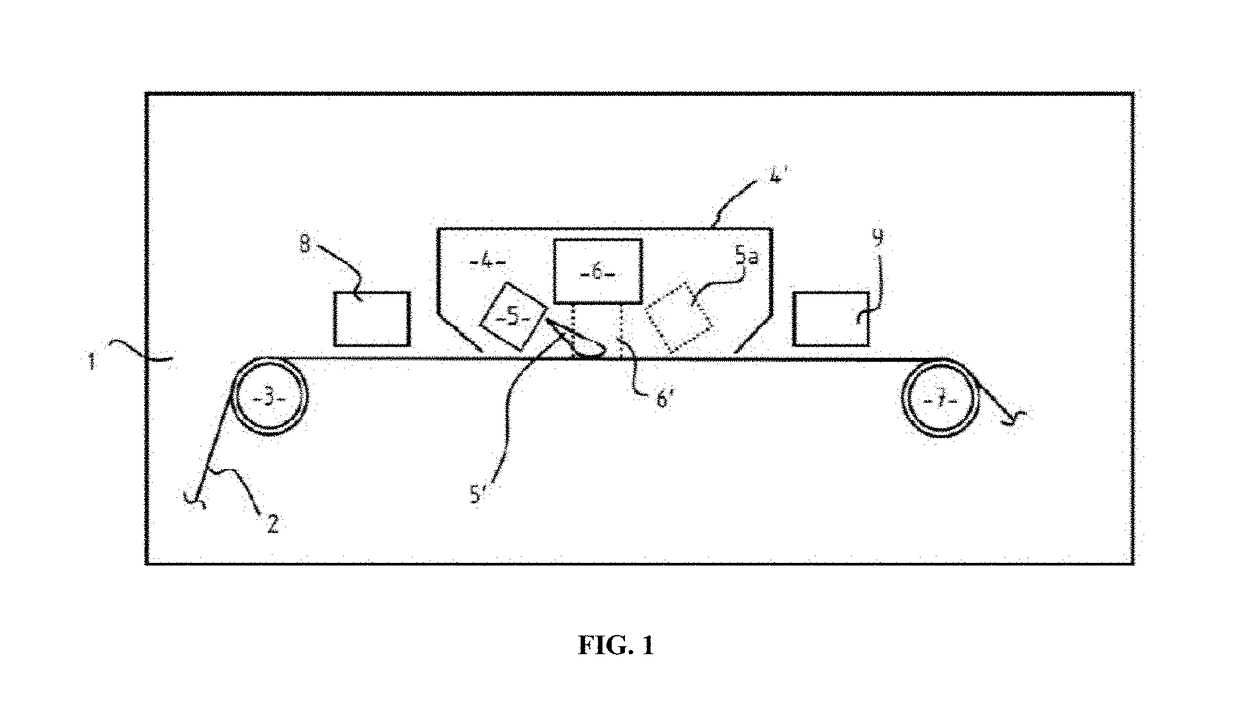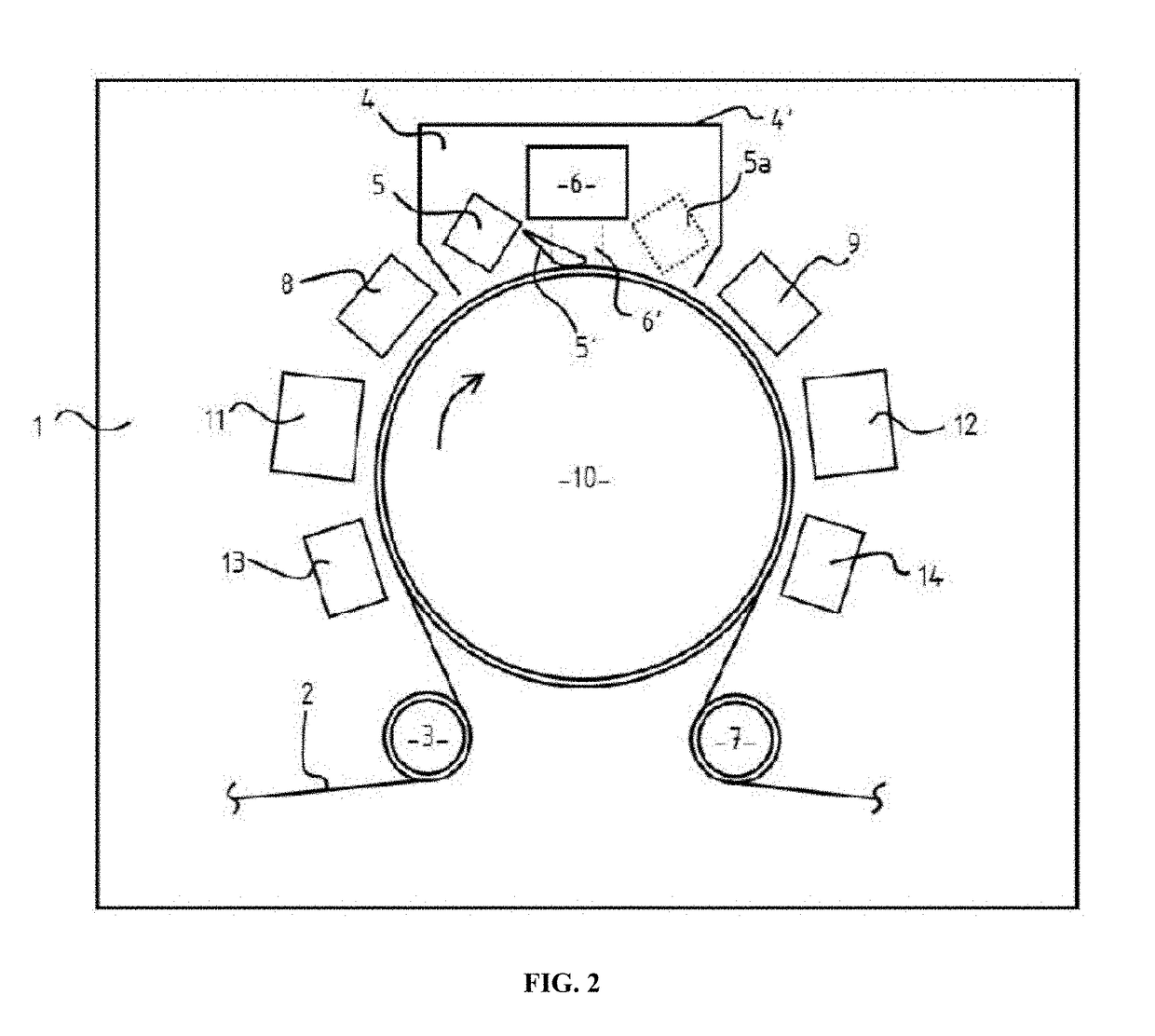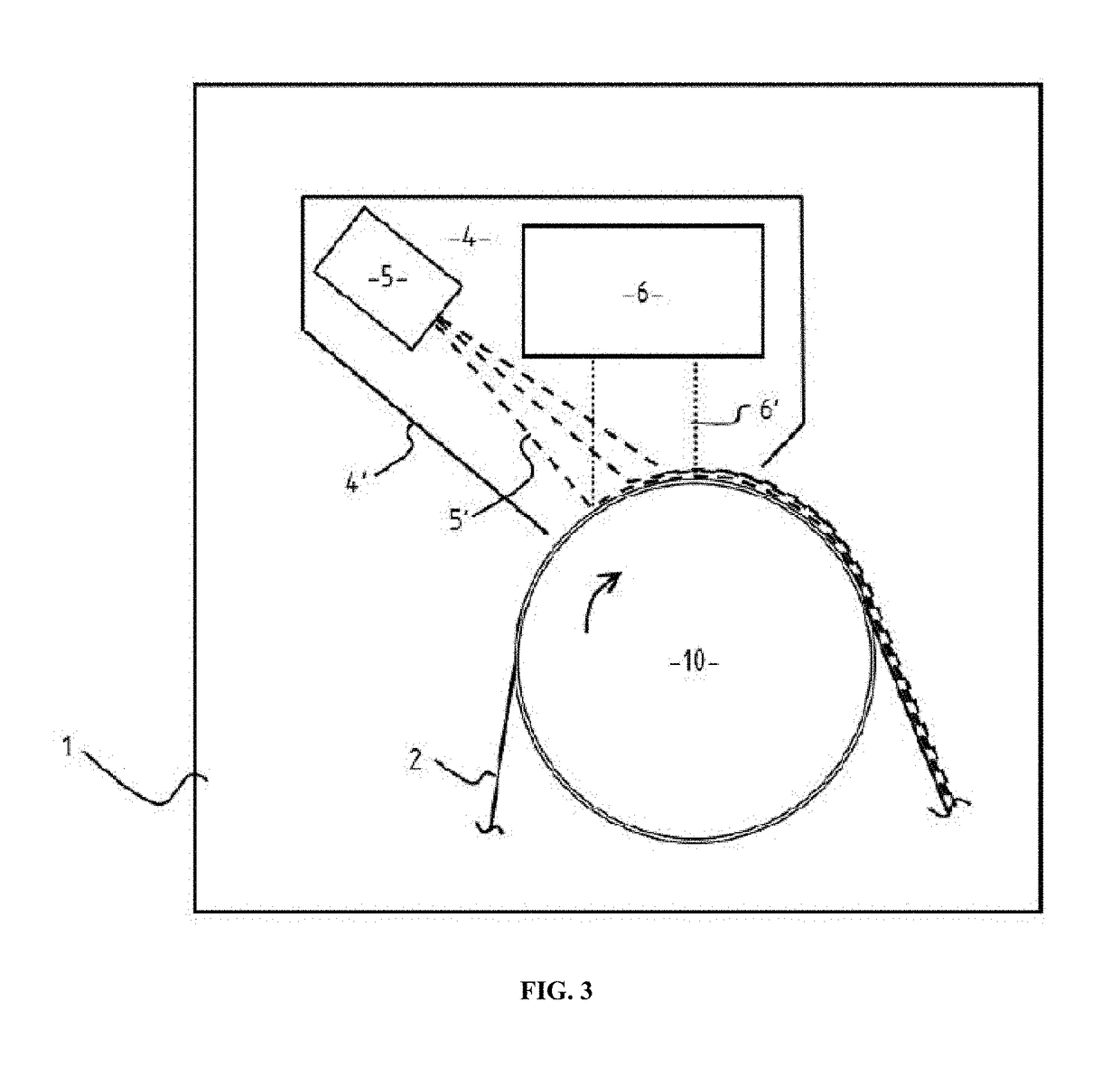In vacuo coating compositions
a technology of vacuo coating and composition, which is applied in the field of vacuo coating composition, can solve the problems of contaminating the pump, poor adhesion of any subsequent coating applied to the material, and vacuum condensation and curing of polymer precursors, and achieve good adhesion to metal layers, good adhesion, and good adhesion
- Summary
- Abstract
- Description
- Claims
- Application Information
AI Technical Summary
Benefits of technology
Problems solved by technology
Method used
Image
Examples
Embodiment Construction
[0055]The apparatus in FIG. 1 is housed in a vacuum chamber 1. A web 2 to be treated is fed over idle rollers 3, 7 between web unwind and rewind stations (not shown). The web is fed past a deposition station 4 defined by an enclosure 4′ in which is housed a device5 that generates a directional beam 5′ of a radiation curable material, and a low pressure gas plasma source 6 that generates a directed ion flux or alternatively an electron flux 6′. In the present invention the radiation curable material is the composition according to the first aspect of the invention in the form of a vaporised or atomised liquid.
[0056]The flux 6′ may comprise cations and other positively charged or non-charged particles and species. Alternatively, the flux may comprise electrons and non-charged particles and species. Thus, depending on the set up, either positively charged ions or electrons will be directed at the film to form the primary curing or processing initiator. The ionisation fraction of the pl...
PUM
| Property | Measurement | Unit |
|---|---|---|
| atmospheric pressure | aaaaa | aaaaa |
| vacuum pressure | aaaaa | aaaaa |
| vacuum pressure | aaaaa | aaaaa |
Abstract
Description
Claims
Application Information
 Login to View More
Login to View More - R&D
- Intellectual Property
- Life Sciences
- Materials
- Tech Scout
- Unparalleled Data Quality
- Higher Quality Content
- 60% Fewer Hallucinations
Browse by: Latest US Patents, China's latest patents, Technical Efficacy Thesaurus, Application Domain, Technology Topic, Popular Technical Reports.
© 2025 PatSnap. All rights reserved.Legal|Privacy policy|Modern Slavery Act Transparency Statement|Sitemap|About US| Contact US: help@patsnap.com



